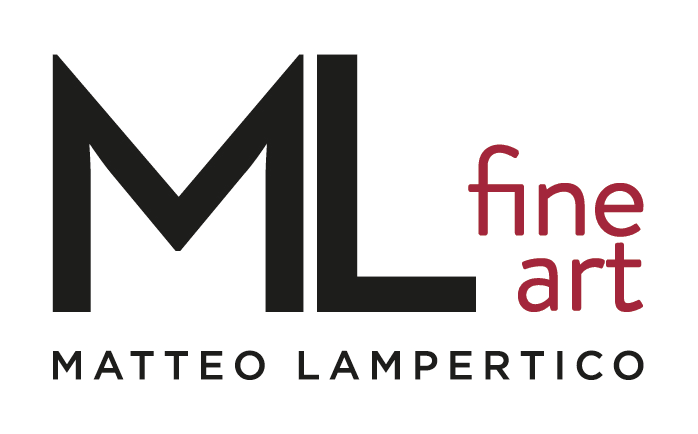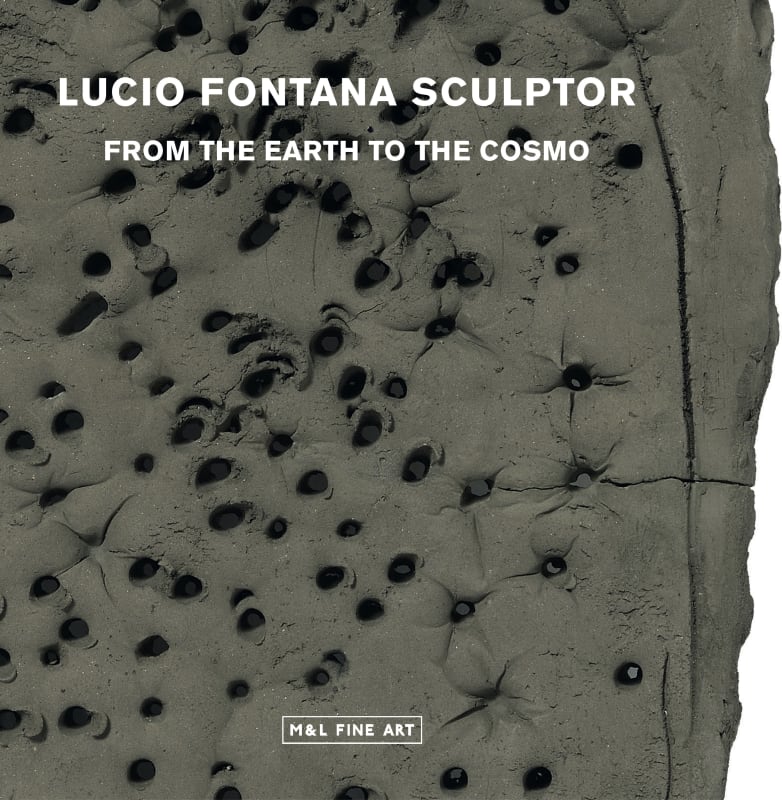M&L Fine Art presents Lucio Fontana: Sculptor – From the Earth to the Cosmos, a rare opportunity to retrace Lucio Fontana’s (1899-1968) artistic career represented through a series of sculptures and ceramics shown in the UK for the first time.
One of the most renowned artists of post-war Italy, Fontana loved to call himself a sculptor from the very beginning of his career, and envisioned a new art form that could transcend the distinctions that traditionally differentiate painting, sculpture, architecture and decorative art. Yet, Fontana’s sculptural pieces remain a lesser-known aspect of his work. This exhibition places them centre stage when considering his engagement with space, the eternal and infinity primarily as a sculptor. It aims to reconsider this aspect of Fontana’s work by highlighting the expressive results he achieved and stressing the relationship between painting and sculpture which represents a unitary and indissoluble core in his output.
From the Earth to the Cosmos encompasses the breadth of the artist’s experimentation with sculptural form starting from an early figurative work, I cavalli che seguono la Vittoria (bozzetto) (1936), a scale model in bronze of a sculpture exhibited in the 1934 MilanTriennial. Following Fontana’s return to Italy from Argentina in 1947 he applied himself fully to the development of his theory of Spazialismo (Spatialism). However, this research was not limited solely to painting. On the contrary, it was precisely during this period that sculpture took on a new significance in his work.
Fontana spent his summer months in Albissola, a small Ligurian town that specialises in ceramics, where he had a studio and worked in collaboration with local kilns. Battaglia (Battle) (1947) illustrates the new direction taken by his sculpture, in parallel with the earliest Spatialist manifestos, termed by Gio Ponti as “battaglie corallo” where the figurative form moves in space with ‘baroque impetus’. Works such as the two large ceramic plates Guerrieri a Cavallo (Warriors on Horseback) (1950) are a rare example of their size. Exhibited at the 1950 Venice Biennale where they where bought to decorate the Bauer Hotel in Venice, they show how the circular shape of the plate became a canvas in its own right for Fontana, who would reuse plates discarded by manufacturers, to completely transform them through the addition of bright, garishly coloured figurative reliefs.
The earliest abstract piece on display is Concetto spaziale (Il pane) (1951), a slab of clay whose surface is covered by brutal punctures, of which only one other example is known, in the collection of the Fondazione Fontana in Milan. In this work, Fontana transfers all the gestural energy to the raw material in a composition where the contrast between the physical and manual aspects of ‘making’ is evident. The introduction of holes allowing the viewer to perceive an infinite space or ‘cosmos’ – both real and symbolic – beyond the surface remained a philosophical preoccupation throughout the 1950s and 1960s. These works opened up new creative and existential perspectives, mirrored by a series of drawings initially conceived as illustrations for poems by Lina Angioletti (1956) and inspired by the poet’s lyrics on the themes of day and night.
Fontana’s collaboration with architects to produce ephemeral or monumental installation was significant in defining a new space and a different role for contemporary art in architecture, and secured him significant financial success, not least because of the religious themes explored in some of these projects. This is evident in works such as bozzettos for Madonna Assunta e San Michele Arcangelo (1958), a series of terracotta bas-relief models realised as part of preparatory work for the façade of the Parochial Church of the Assumption in Piani (1958), Celle Ligure, one of several public commissions that Fontana undertook.
Among Fontana’s later pieces, the exhibition includes Concetto Spaziale (Spatial Concept) (1960-65), a smooth, black ellipsoidal ball with perforations on one side and which appears to be inspired by ideas about the shape of the cosmos. The cuts made within this deep, dark space remain a distinct feature of the last decade of Fontana’s work and represent his search for an essential, unique gesture, the expression of man’s bewilderment faced with the idea of infinity.
A fully illustrated catalogue of the exhibition will be published with newly commissioned texts by art historian Paolo Campiglio and curator Luciano Tellaroli.


